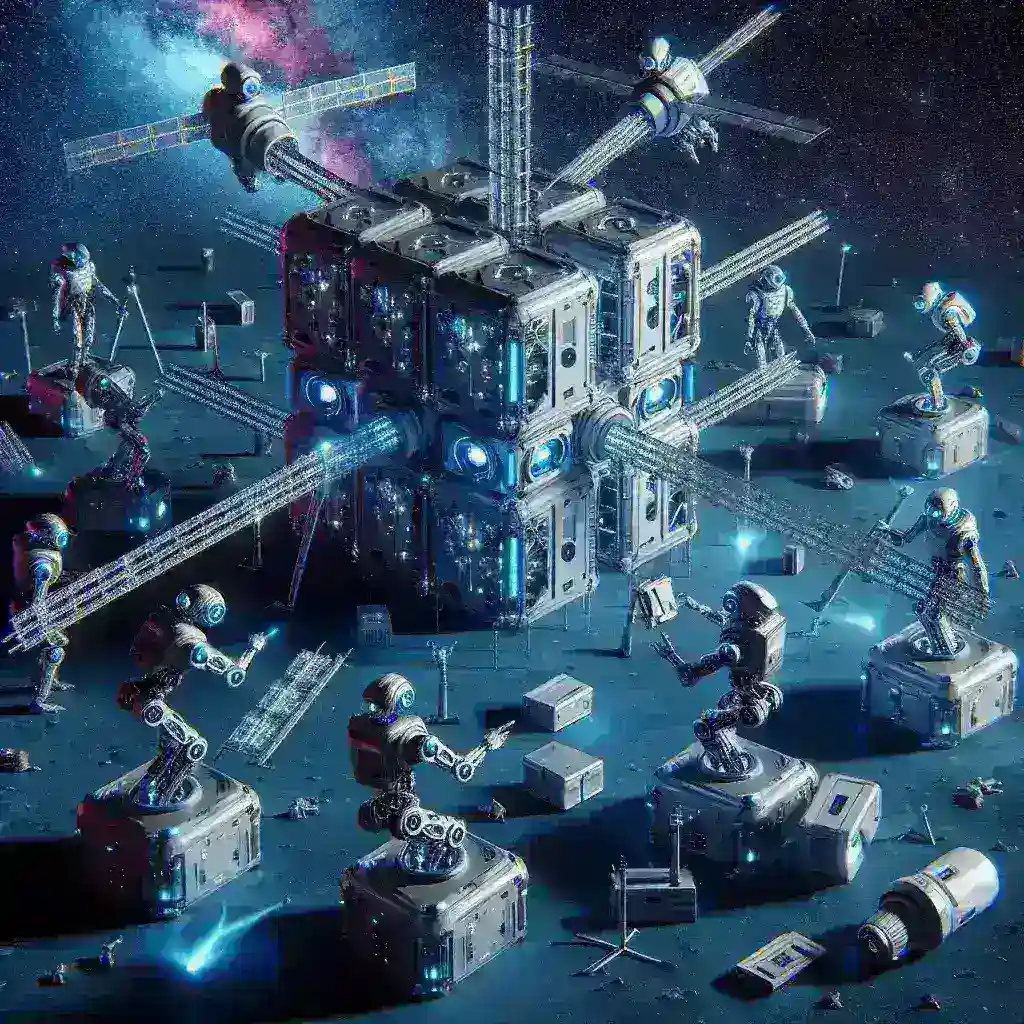Introduction
The dawn of the space age has opened a realm of possibilities, pushing the boundaries of human ingenuity. Among the most exciting advancements are AI robotics and their role in constructing modular space stations with self-healing structures. This article delves into the intersection of artificial intelligence, robotics, and architecture in outer space, exploring how these technologies facilitate the creation of resilient, sustainable habitats beyond Earth.
The Evolution of Space Stations
Space stations have undergone significant transformations since the launch of Salyut 1, the first space station, in 1971. Early designs were rudimentary and focused on survival, but as technology progressed, so did our ambitions. The International Space Station (ISS), launched in 1998, represents a significant leap in complexity and international collaboration. However, as we look to the future, the concept of modular space stations powered by AI robotics offers unprecedented flexibility and resilience.
What Are Modular Space Stations?
Modular space stations are designed with individual units or modules that can be constructed, modified, and expanded independently. This approach allows for:
- Scalability: New modules can be added as missions evolve.
- Flexibility: Different modules can serve diverse scientific, recreational, or habitation purposes.
- Maintenance: Damaged modules can be replaced without affecting the entire station.
The Role of AI Robotics
AI robotics plays a crucial role in the construction and maintenance of these modular space stations. Employing advanced robotics equipped with AI capabilities allows for:
1. Autonomous Construction
Robots can work autonomously in the harsh environment of space, assembling modules with precision. AI algorithms enable them to adapt to real-time challenges, such as microgravity and radiation exposure.
2. Predictive Maintenance
AI can analyze data from the station’s systems, predicting potential failures and scheduling maintenance before issues arise, significantly increasing the station’s lifespan.
3. Enhanced Efficiency
Robotic systems can operate around the clock, ensuring that construction and operations continue without interruption, thereby maximizing resource utilization.
Self-Healing Structures: A Game Changer
One of the most groundbreaking aspects of modern engineering is the development of self-healing materials. These materials can automatically repair damage without human intervention, greatly enhancing the durability of space habitats.
How Do Self-Healing Structures Work?
Self-healing materials typically incorporate microcapsules containing a healing agent that is released upon damage, effectively sealing cracks and preventing further degeneration. This technology is crucial in the unforgiving environment of space, where repairs can be logistically challenging and costly.
Benefits of Self-Healing Structures
- Increased Longevity: Structures can last significantly longer, reducing the need for replacements.
- Lower Maintenance Costs: With minimal intervention required, operational costs are reduced.
- Enhanced Safety: Self-repairing capabilities ensure that habitats remain safe for astronauts.
Case Studies and Real-World Applications
Several ongoing projects demonstrate the practical application of AI robotics and self-healing materials in space:
1. NASA’s Artemis Program
The Artemis program aims to return humans to the Moon and establish a sustainable presence. Modular habitats designed for lunar use will incorporate self-healing materials to withstand the Moon’s harsh conditions.
2. ESA’s Moon Village Initiative
The European Space Agency envisions a collaborative Moon Village with modular habitats that can be expanded as international partnerships grow. AI robotics will play a pivotal role in the assembly and maintenance of these habitats.
Future Predictions: The Next Frontier
As technology evolves, we can expect significant advancements in the integration of AI robotics and self-healing structures. Future modular space stations may include:
- Smart Ecosystems: Integrated systems that monitor environmental conditions and optimize life support.
- Interconnectivity: Modular stations that can communicate and share resources with other space habitats.
- Local Resource Utilization: Utilizing materials available on other celestial bodies to reduce the need for supplies from Earth.
Challenges Ahead
Despite the promise of these technologies, several challenges remain:
1. Technical Limitations
Developing reliable self-healing materials that can perform under extreme conditions is still an ongoing research area.
2. Cost Implications
The initial investment in these technologies could be high, potentially limiting their adoption in the short term.
3. Regulatory Hurdles
As international space law evolves, regulatory frameworks will need to adapt to accommodate new technologies, ensuring safety and sustainability in space exploration.
Cultural Relevance and Human Connection
The evolution of modular space stations and AI robotics also invites a cultural dialogue about humanity’s future in space. As we create these habitats, it’s crucial to consider:
- Ethical Implications: The responsibility of ensuring that space is used for peaceful purposes and benefits all of humanity.
- Human Experience: How these technologies can enhance the well-being of astronauts and provide meaningful experiences in space.
Conclusion
The integration of AI robotics and self-healing structures in the construction of modular space stations represents a paradigm shift in space exploration. These advancements promise to create resilient, sustainable habitats that can support human life beyond Earth. As we stand on the brink of a new era in space exploration, the potential for innovation and discovery is truly limitless.

Leave a Reply